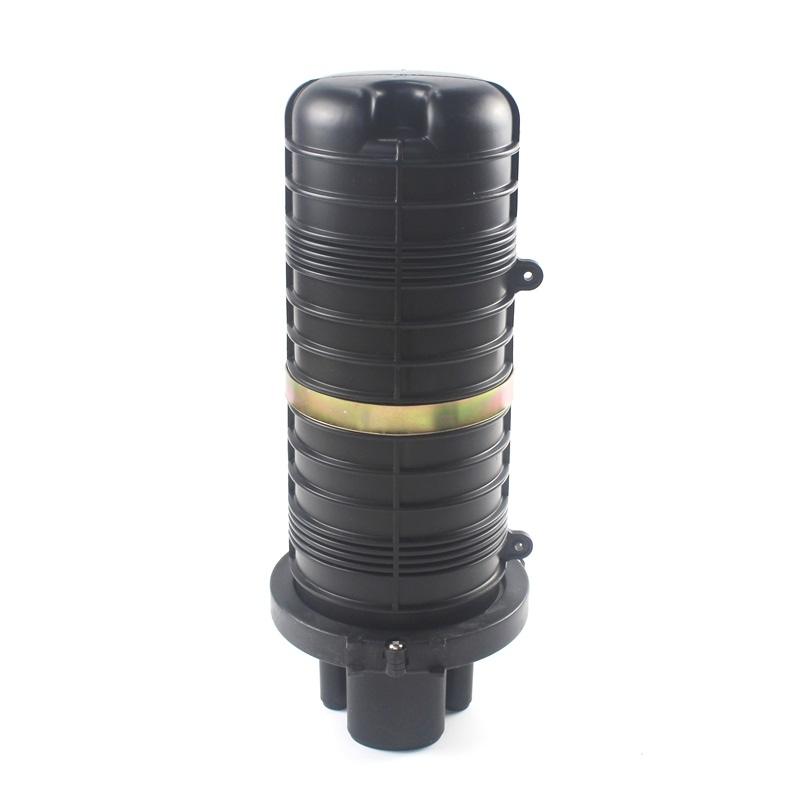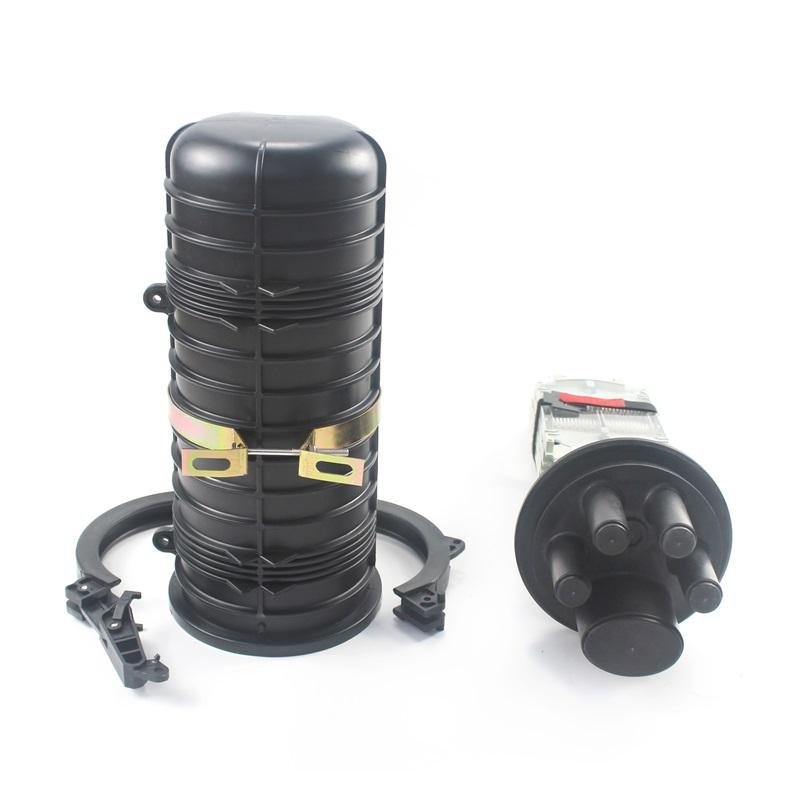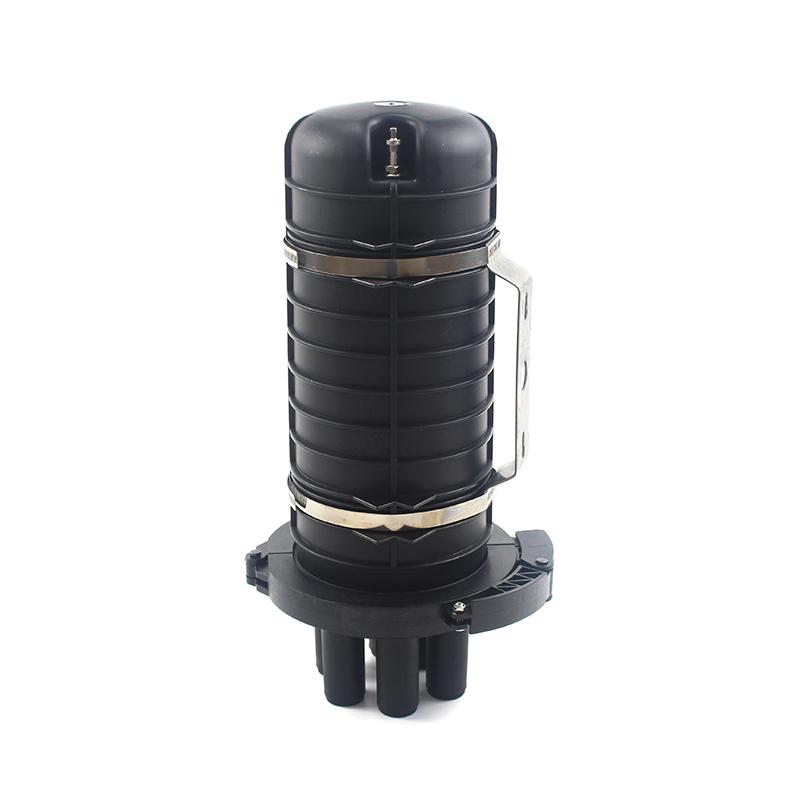
Fiber Optic Closure systems protect cables from harsh underground threats. Moisture, rodents, and mechanical wear often damage underground networks. Advanced sealing technologies, including heat shrinkable sleeves and gel-filled gaskets, help block water and dirt. Strong materials and secure seals keep cables safe, even during extreme weather changes.
Key Takeaways
- Fiber optic closures use strong materials and waterproof seals to protect cables from water, dirt, and harsh underground conditions.
- Proper installation and regular inspections help keep closures sealed, prevent damage, and extend the life of underground fiber networks.
- Different closure types like dome and inline offer reliable protection and easy maintenance for various underground applications.
Fiber Optic Closure: Purpose and Key Features

What Is a Fiber Optic Closure?
A Fiber Optic Closure acts as a protective case for fiber optic cables, especially at points where cables are joined or spliced. It creates a sealed environment that keeps out water, dust, and dirt. This protection is important for underground cable networks, where cables face harsh conditions. The closure also helps organize and manage the spliced fibers, making it easier for technicians to maintain the network. It serves as a connection point for different cable segments and supports the stability of data transmission.
Tip: Using a Fiber Optic Closure helps prevent signal loss and keeps the network running smoothly.
Essential Components and Materials
The durability of a Fiber Optic Closure depends on its strong components and materials. Most closures use high-strength plastics or metals like polypropylene or stainless steel. These materials resist chemicals, physical damage, and extreme temperatures. Key parts include:
- A tough outer casing that blocks water and dust.
- Rubber or silicone gaskets and heat-shrink sleeves for airtight seals.
- Splice trays to hold and organize fiber splices.
- Cable entry ports with mechanical seals to keep out contaminants.
- Grounding hardware for electrical safety.
- Storage areas for extra fiber to prevent sharp bends.
These features help the closure withstand underground pressures and temperature changes.
How Closures Protect Fiber Splices
Closures use several methods to protect fiber splices underground:
- Watertight seals and gaskets keep moisture and dirt out.
- Shock-absorbing materials guard against impacts and vibrations.
- Strong casings resist temperature swings and physical stress.
- Tight clamps or screws ensure the closure stays sealed.
Regular checks and timely repairs keep the closure working well, ensuring long-term protection for the fiber network.
Fiber Optic Closure: Addressing Underground Challenges
Waterproof and Moisture Protection
Underground environments expose cables to water, mud, and humidity. Fiber Optic Closure systems use advanced sealing methods to keep water and moisture out. These methods include heat-shrink sleeves, rubber gaskets, and gel-filled seals. A strong seal prevents water from entering and damaging the fiber splices.
Technicians use several tests to check waterproof performance:
- Insulation resistance testing measures the dryness inside the closure. A high resistance value means the closure stays dry.
- Water ingress monitoring uses spare optical fibers to detect leaks. This method helps spot problems before they cause damage.
Note: Keeping water out is the most important step in protecting underground fiber networks.
Mechanical Strength and Pressure Resistance
Underground cables face pressure from soil, rocks, and even heavy vehicles passing above. Fiber Optic Closure designs use tough plastic housings and strong cable clamps. These features protect the fibers from crushing, bending, or pulling.
- Sturdy housings shield the splices from impacts and vibrations.
- Cable retention systems hold cables tightly, resisting pullout forces.
- Strength-member clamps secure the cable’s core, reducing stress from temperature changes.
Inside the closure, trays and organizers keep fibers safe from bending and twisting. This design helps prevent signal loss and physical damage.
Temperature and Corrosion Resistance
Underground temperatures can swing from freezing cold to extreme heat. Fiber Optic Closure products use materials that handle temperatures from -40°C to 65°C. These materials stay strong and flexible, even in harsh weather.
- Polypropylene and other plastics resist cracking in the cold and softening in the heat.
- Special coatings, like UV-curable urethane acrylate, block moisture and chemicals.
- Outer layers made from Nylon 12 or polyethylene add extra protection.
These features help the closure last for many years, even when exposed to underground chemicals and moisture.
Ease of Maintenance and Inspection
Underground closures must be easy to check and repair. Many designs use removable covers and modular parts. This makes it simple for technicians to open the closure and inspect the fibers.
- Splice trays organize the fibers, making repairs quick and easy.
- Storage baskets prevent cables from tangling.
- Cable entry ports allow cables to pass through without letting in dirt or water.
- Grounding hardware keeps the system safe from electrical hazards.
Routine inspections help spot problems early. Technicians look for signs of damage, clean the seals, and check that all connections stay tight. Regular maintenance keeps the closure working well and reduces network downtime.
Fiber Optic Closure: Types and Best Practices for Underground Use

Dome Closures and Their Advantages
Dome closures, also called vertical closures, use a dome-shaped design made from strong engineering plastics. These closures protect fiber splices from water, dirt, and insects. The dome shape helps shed water and keeps the inside dry. Dome closures often use both mechanical and heat-shrink seals, which provide a tight, long-lasting barrier against moisture. Many models include built-in fiber management systems and hinged splice trays. These features help organize fibers and make maintenance easier. Dome closures work well in both underground and aerial settings. Their compact size and high-level sealing make them a top choice for underground networks.
Tip: Dome closures with IP68 ratings offer excellent protection against water and dust.
| Closure Type | Shape | Material | Application | Port Configuration | Design Features and Protection |
|---|---|---|---|---|---|
| Dome Type (Vertical) | Dome-shaped | Engineering plastics | Aerial & direct buried | 1 to 3 inlet/outlet ports | High-level seals, waterproof, insect and dirt proof |
Inline Closures for Underground Applications
Inline closures, sometimes called horizontal closures, have a flat or cylindrical shape. These closures protect fiber splices from water, dust, and physical damage. Inline closures are ideal for direct burial underground. Their design provides strong resistance to impact, crushing, and temperature changes. Inline closures can hold a large number of fibers, making them suitable for high-capacity networks. The clamshell opening allows easy access for adding or repairing cables. This design helps technicians organize fibers and perform maintenance quickly.
| Closure Type | Fiber Capacity | Ideal Applications | Advantages | Limitations |
|---|---|---|---|---|
| Inline (Horizontal) | Up to 576 | Aerial, underground | High density, linear layout | Requires more space |
Installation Tips for Maximum Durability
Proper installation ensures long-lasting performance for any Fiber Optic Closure. Technicians should follow these best practices:
- Place underground conduits at least 1 to 1.2 meters deep to protect cables from damage.
- Use heat-shrinkable seals and high-tension plastics to keep out water and dust.
- Prepare and clean all fibers before splicing to prevent weak connections.
- Secure cables with proper retention and grounding to avoid strain and electrical issues.
- Follow manufacturer guidelines for sealing and assembly.
- Inspect closures regularly for signs of wear or leaks.
- Train technicians on correct installation and maintenance steps.
Regular inspections and careful installation help prevent network problems and extend the life of underground closures.
- Underground closures use waterproof seals, strong materials, and corrosion resistance to protect cables from harsh conditions.
- Careful selection and installation help networks last longer and work better.
- Regular checks and proper sealing prevent costly repairs and keep signals strong for years.
FAQ
How long can a fiber optic closure last underground?
A fiber optic closure can last over 20 years underground. Strong materials and tight seals protect it from water, dirt, and temperature changes.
What does the IP68 rating mean for fiber optic closures?
IP68 means the closure resists dust and can stay underwater for long periods. This rating shows strong protection for underground use.
Can technicians open and reseal closures for maintenance?
Technicians can open and reseal closures during inspections. Proper tools and careful handling keep the closure sealed and the fibers safe.
Post time: Aug-06-2025
